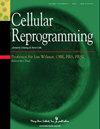Effects of Trichostatin A on the Timing of the First Cleavage and In Vitro Developmental Potential of Bovine Somatic Cell Nuclear Transfer Embryos.
IF 1.2
4区 医学
Q4 BIOTECHNOLOGY & APPLIED MICROBIOLOGY
引用次数: 0
Abstract
This study examined the relationship between the timing of the first cleavage and in vitro development of bovine somatic cell nuclear transfer (SCNT) embryos treated with trichostatin A (TSA). SCNT embryos were visually assessed at 22, 26, and 48 hours after activation. Each embryo with two or more distinct blastomeres was transferred into a microwell and cultured until day 7. Irrespective of TSA treatment, approximately half of the cleaved embryos were observed at 22 hours, and a significantly higher blastocyst formation rate was shown in the SCNT embryos cleaved at 22 hours than those cleaved at ≥26 hours. The blastocyst formation rate of TSA-treated embryos cleaved at 22 hours (80%) was slightly higher than that of the control embryos (70%). In addition, interferon-τ (IFN-τ) expression was significantly lower in control SCNT embryos and late-cleaving (>26 hours) TSA-treated embryos than in in vitro fertilized (IVF) embryos. However, a significant difference was not observed between TSA-treated SCNT embryos cleaved at 22 and 26 hours, and IVF embryos. These results suggest that TSA treatment has no influence on the timing of the first cleavage of SCNT embryos; however, it slightly improves the blastocyst formation rate and the expression level of IFN-τ in early-cleaving embryos.曲霉菌素A对牛体细胞核移植胚胎第一次切割时机和体外发育潜力的影响。
本研究检测了曲霉菌素A(TSA)处理的牛体细胞核移植(SCNT)胚胎的首次卵裂时间与体外发育之间的关系。在激活后22、26和48小时对SCNT胚胎进行视觉评估。将每个具有两个或多个不同卵裂球的胚胎转移到微孔中并培养至第7天。无论TSA处理如何,在22小时时观察到大约一半的裂解胚胎,并且在22小时裂解的SCNT胚胎中显示出明显高于在≥26小时裂解的胚胎的胚泡形成率。TSA处理的胚胎在22小时裂解后的胚泡形成率(80%)略高于对照胚胎(70%)。此外,干扰素-τ(IFN-τ)在对照SCNT胚胎和TSA处理的晚期裂解(>26小时)胚胎中的表达显著低于体外受精(IVF)胚胎。然而,TSA处理的SCNT胚胎在22和26小时裂解,与IVF胚胎之间没有观察到显著差异。这些结果表明TSA处理对SCNT胚胎第一次切割的时间没有影响;然而,它略微提高了早期分裂胚胎的胚泡形成率和IFN-τ的表达水平。
本文章由计算机程序翻译,如有差异,请以英文原文为准。
求助全文
约1分钟内获得全文
求助全文
来源期刊

Cellular reprogramming
CELL & TISSUE ENGINEERING-BIOTECHNOLOGY & APPLIED MICROBIOLOGY
CiteScore
2.50
自引率
6.20%
发文量
37
审稿时长
3 months
期刊介绍:
Cellular Reprogramming is the premier journal dedicated to providing new insights on the etiology, development, and potential treatment of various diseases through reprogramming cellular mechanisms. The Journal delivers information on cutting-edge techniques and the latest high-quality research and discoveries that are transforming biomedical research.
Cellular Reprogramming coverage includes:
Somatic cell nuclear transfer and reprogramming in early embryos
Embryonic stem cells
Nuclear transfer stem cells (stem cells derived from nuclear transfer embryos)
Generation of induced pluripotent stem (iPS) cells and/or potential for cell-based therapies
Epigenetics
Adult stem cells and pluripotency.
 求助内容:
求助内容: 应助结果提醒方式:
应助结果提醒方式:


